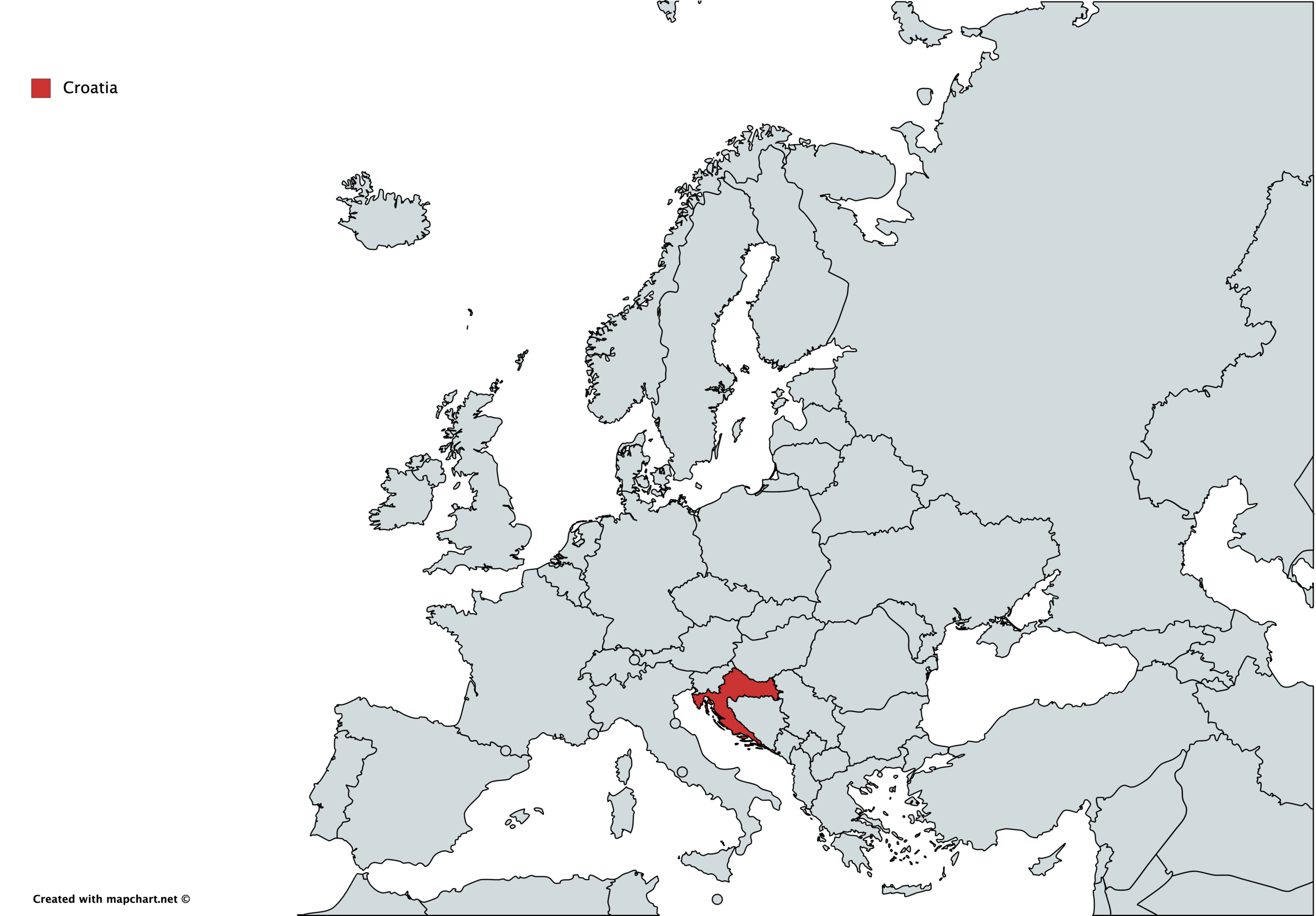Croatia
Population (2017): 4.154 M
Income per Capita (2018): 13,294.51 US
Percentage of GDP on Healthcare (2015): 7.40%
training
Type of Training: Residency
Length of Training: Medical school, (6 years), internship (1 year), after there is a state exam and post graduate program (3 years) (Masic et al., 2014)
Year family medicine established: 1980
Number of institutions that offer family medicine: There are 4 universities that teach family medicine, Faculty of Medicine, University of Zagreb, Faculty of Medicine University of Split, Faculty of Medicine, University of Rijeka, and the Faculty of Medicine University of Osijek (Brekke et al., 2013)
Number of family medicine residents graduating each year: unknown
practice
Number of family doctors in country (2016): 3,406 family physicians (Eurostat, 2016)
Physician to population ratio (2006): 66.4 family physicians per 100,000 people (Masseria et al., 2009).
Number of family doctors in country (2016): 1,412 family physicians (Eurostat, 2016)
Physician to population ratio (2006): 56.1 family physicians per 100,000 people (Masseria et al., 2009).
DALY: 15,369 per 100,000 individuals (Due to all Causes).
Life Expectancy:
Females 2017: 80.9 years
Males 2017: 74.9 years
Mortality rate 2017:
2017 Males: 119 per 1,000 male adults.
2017 Females: 51 per 1,000 female adults.
Infant Immunization-HepB3: % of 1-year-old children received: 93%
College of Family Physicians (Y or N):
No
healthcare system
Croatia has a universal healthcare system that is not provided by tax money but through a mandatory health insurance (MIH) that provides the right to healthcare for all of its citizens.
training
Family medicine was established in Croatia in 1980, and now requires training in medical school for six years (Masic et al., 2014) followed by a required 1 year internship. After this, doctors must pass the state exam and do a 3 year post graduate program in family medicine. Four universities currently offer this training: Faculty of Medicine, University of Zagreb, Faculty of Medicine University of Split, Faculty of Medicine, University of Rijeka, and the Faculty of Medicine University of Osijek (Brekke et al., 2013).
practice
Croatia has 3406 family physicians recorded in 2016 (Eurostat, 2016), with 66.4 family physicians per 100,000 people recorded in 2006 (Masseria et al., 2009).
Family Physicians in this country act as gatekeepers. They are the first point of contact for patients into the healthcare system. They work to monitor and manage chronic illnesses for patients and also provide referrals to specialists.
References
Brekke, M., Carelli, F., Zarbailov, N., Javashvili, G., Wilm, S., Timonen, M., & Tandeter, H. 2013. “Undergraduate Medical Education in General Practice/Family Medicine throughout Europe-a Descriptive Study.” http://www.biomedcentral.com/1472-6920/13/157.
Masic, I., Skopljak, A., & Jatic, Z. 2014. “Comparative Review of Education Programs of Family Medicine (FM) in Bosnia and Herzegovina and Several Transition Countries.” Materia Socio-Medica 26 (6): 411–18. https://doi.org/10.5455/msm.2014.26.411-418.
Masseria, C., Irwin, R., Thomson, S., Gemmill, M., & Mossialos, E. 2009. “Primary Care in Europe.” The London School of Economics and Political Science, no. December: 1–42. https://doi.org/10.1097/JAC.0b013e31824b45f4.
“Physicians, by Speciality.” 2016. Eurostat. Retrieved from https://ec.europa.eu/eurostat/statisticsexplained/index.php?title=File:Physicians,_by_speciality,_2016_HLTH18.png.



